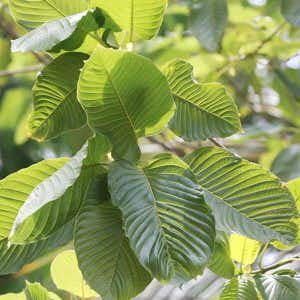
In the last few years, Americans have become very interested in an herb that would previously have been considered exotic. Kratom has gained popularity as a substitute for narcotics that are increasingly more difficult to obtain. Does this make it a marvel or a menace?
What Is Kratom and What Is It Used For?
Q. What is kratom used for around the world? Here it is a supplement, but the DEA is planning to ban it and list it as a schedule 1 drug. Apparently, though, it has some beneficial effects. Can you help bring this kratom supplement into the light?
A. Kratom (Mitragyna speciosa) is native to southeast Asia, where people use its leaves as a mild stimulant and pain reliever. Many people report that this plant has a pleasant calming effect.
Recently, Americans have tried using it as a dietary supplement to manage chronic pain or to help overcome narcotic addiction. It has not been extensively studied, though, so the benefit/risk balance is not well established. The National Institute of Drug Abuse has identified this herb as an emerging drug of abuse (Morbidity and Mortality Weekly Report, July, 29, 2016). In some instances, exposure to kratom has resulted in seizures, psychosis or death.
The DEA Hopes to Make Kratom a Controlled Substance:
You are correct that the DEA (Drug Enforcement Administration) planned to classify kratom as a Schedule 1 drug, like LSD and heroin. Such compounds are considered very dangerous and without medicinal use. The agency fears that this plant could be abused.
The DEA is delaying this action for the time being, however, because it received so many messages from the American public asking that kratom not be banned. According to a report in Scientific American, a DEA spokesman said the agency is listening: “We don’t want the public to believe we are simply a group of government bureaucrats who don’t care about their safety and health.”
Tradition vs. the Internet:
In its traditional context, farm laborers chew on the leaves or make them into tea so they can work longer and harder. This is also how indigenous people in the Andes use coca leaves.
Turning a traditional botanical into a supplement divorced from the ethnopharmacological knowledge that people have about how to prepare it and utilize it could indeed set some people up for negative effects (BioMed Research International, online Nov. 10, 2015). Mitragyna speciosa might cause liver damage (Natural Product Communications, Oct., 2015). In addition, while some users experience benefits, others may have problems with cognitive function (Brain Research Bulletin, Sep., 2016).

